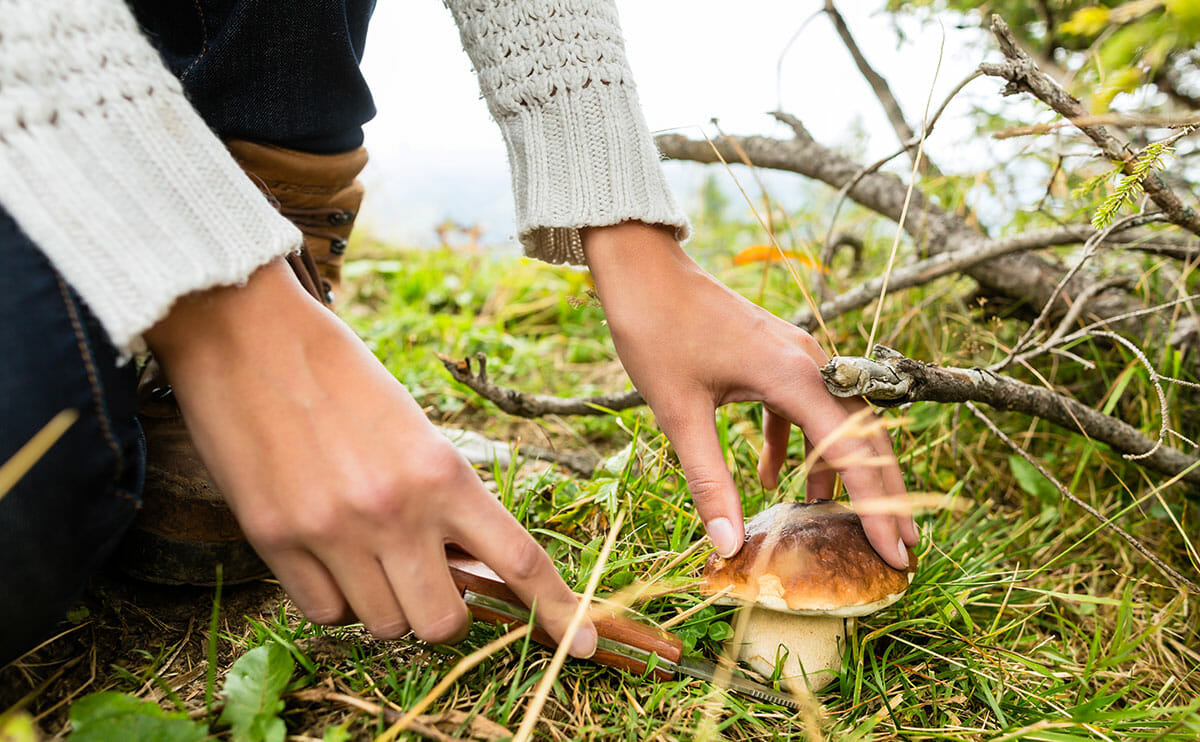Maybe you should keep your foraging to the farmers market.

[mf_h5 align=”left” transform=”uppercase”]You can die.[/mf_h5]
Chris McCandless, made posthumously famous by “Into the Wild,” died in the Alaskan wilderness. He foraged and trapped and survived for months, learning about foraging from a book. Then he ate one wrong thing. Two decades after McCandless’ death, the debate about what killed him — which plant, which toxin — continues. Twenty years of considering one wrong plant and one tragic death, with no certain answer.
[mf_h5 align=”left” transform=”uppercase”]Book-learning is not enough.[/mf_h5]
Pros learn from other pros. That’s true of chefs as well as professional gatherers, and kitchen people know where to stop. At Noma, the renowned local-intensive restaurant in Copenhagen, new cooks are led into the forest and, item by item and place by place, shown what to gather and how. Even then, New York sous chef Aron Pobereskin recalls that Noma used a professional forager for what Pobereskin terms “harder stuff”: things that aren’t easy to find, foodstuffs in delicate ecosystems, items that can be harvested only in small percentages.
Beyond that, professionals ”“ chefs and foragers alike ”“ know how to use what they pick. Bringing home all the food you can find is not the same as bringing home all the food you can use, and there are few sadder sights than rotting food in the kitchen. And if you don’t know how to clean or prepare something, you may be putting yourself in line for a few days of discomfort, if not worse. That includes plants contaminated by pesticides and other chemicals, animal waste and passing cars.
[mf_h5 align=”left” transform=”uppercase”]Too much gathering destroys the future.[/mf_h5]
Experienced foragers know when to stop picking. Strip too much from land or water, and you dim species’ chances of reproduction. And rules about stopping are subtler than “Don’t pick the ground bare.” Forager Laurie Constantino’s guidelines include not picking more than three fiddlehead ferns (the young tight coils of Matteuccia struthiopteris, the ostrich fern) from one plant. Pick more, and the plant may die.
Where the existence of local flora and fauna ends, a less pleasant cycle can begin. Damage a native species and you leave a gap for an invasive species to move in. That’s never a story with a happy ending. Professional foragers take the time to learn about new-to-the region species, how to gather them and how to make use of them.
[mf_h5 align=”left” transform=”uppercase”]The trail is your friend.[/mf_h5]
Mushrooms and plants don’t grow in the middle of well-trodden routes. For a neophyte forager, the temptation to go off-trail can be overwhelming. Walking into the meadow or forest can mean damaging delicate topsoil, disturbing wildlife and damaging vegetation that seems unimportant, but is vital to the ecosystem. A human’s dismissible greenery may be a bird’s irreplaceable ground-cover or an insect’s breeding place.
Wardens and professional foragers can explain not only where a region is especially vulnerable, but also when. A place that was fine to walk a season ago may to be footprint-free right now. For example, soil that is arid, flood-soaked or recovering from damage may need higher safeguarding than normal. Then there’s invaluable local knowledge: Was there a chemical spill upstream of a desirable foraging area? Did a migration of birds or butterflies bring lower numbers than usual, leaving those remaining in need of heightened protection? Is this breeding time for a vulnerable animal? If you aren’t 100 percent certain of when and where you can walk without doing harm, then stay away.
[mf_h5 align=”left” transform=”uppercase”]You’re breaking the law.[/mf_h5]
Not all hazards are environmental. Foraging where it isn’t legal can get you arrested. Don’t think you’ll talk your way out of trouble with a warden who has spent years learning to care for a habitat or from a police officer who knows the market value of those morels in your car. The same holds true for exceeding limits. Foraging may be legal, but how much are you allowed to collect can cause trouble. If you’re trespassing on a farmer’s land, grabbing handfuls of apparently wild things, then all you’ll be dining on is regret. Borders are not always clearly marked, and it can be hard to know the bounds.
[mf_h5 align=”left” transform=”uppercase”]If you have to do it…[/mf_h5]
If you have a scorching desire to start foraging, make sure to learn before you gather. Whether you’re in Copenhagen, Cape Town or Kansas City, the best way to learn is from people who have done it for years. Buy reference books, absolutely. Write notes in every margin, then bring the books into the field. But as we said, book-learning isn’t enough.
At the farmers market, ask one of the people selling wild-gathered produce to give you advice. Check Eat the Weeds for foraging instructors. Your local branch of Slow Food may have connections. And until your teacher tells you that you’re ready for independent gathering, do the right thing for yourself and the wilds: Forage at the farmers market, where the produce and producers are sound.
The tone of this article is extremely condescending, title and all. You shouldn’t be trying to spook people out of hobbies, especially activities that reconnect people with the outdoor world. 1/10 article. Just really bad.
It seems to me that foraging is completely unsustainable. We are to numerous as a species to be foraging. Need to leave room and food for nature.